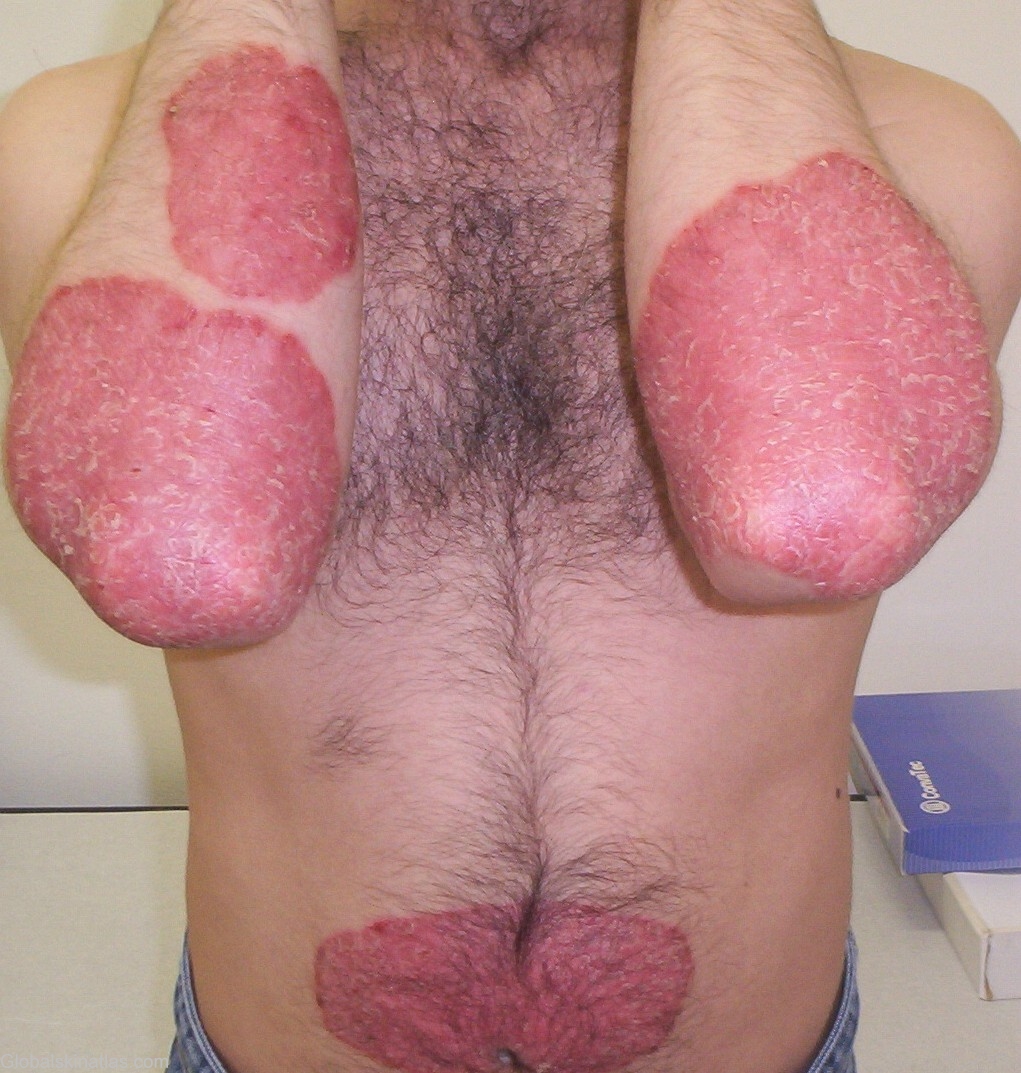

Diagnosis: Psoriasis
Description: Typical erythematous, symetrical, psoriatic plaques
Morphology: Papules,red
Site: Arm,forearm
Sex: M
Age: 36
Type: Clinical
Submitted By: Mehravaran Mehrdad
Differential DiagnosisHistory:
Psoriasis is a chronic, inflammatory scaling disorder of the skin. Its prevalence varies according to race, ethnicity, and geography. It is estimated that 2% of the world population is affected. The clinical course of this common dermatologic disease is dynamic and unpredictable, punctuated by exacerbations and remissions. Plaque Psoriasis A plaque-type pattern occurs most frequently. Several characteristic morphologic features help distinguish plaque-type psoriasis lesions from other papulosquamous skin diseases. The classic clinical appearance is a well-demarcated, erythematous scaly plaque. A pale ring (Woronoff’s ring) may be seen immediately surrounding the lesion. Overlying the erythematous base is a loosely adherent, silvery-white scale. The scale ranges in thickness. Resolving and newly eruptive lesions are often erythematous but may lack scale. If scale is scraped away, a moist tissue composed of the lowest layers of the epidermis remains. When this last epidermal layer is removed, the capillaries lying closely beneath the scales are disrupted , resulting in pinpoint bleeding (Auspitz sign). Initially plaques of psoriasis may be localized or appear in clusters. The primary lesions may enlarge and coalesce into sharply bordered plaques as the disease progresses. This produces lesions of various shapes and patterns: nummular (coin-like), serpiginous, and geographic. The plaques regress (either in response to therapy or spontaneously), they often begin to clear in the center while the disease persists at the edges; this leads to an annular pattern. Linear patterns may occur with physical trauma (positive Koebner phenomenon). Plaque psoriasis most commonly involved sites are the elbows and knees, lumbosacral area, intergluteal cleft and scalp. Although often without symptoms, plaques of psoriasis may be pruritic or painful.
A 36-year-old male with the chief complaint of typical psoriatic plaques on the elbows, knees, and abdominal surface. Family history for psoriasis was negative and disease started 5 years ago with periodic remission and recurences. Patient was treated with topical agents such as keratolytics and steroid creams.
